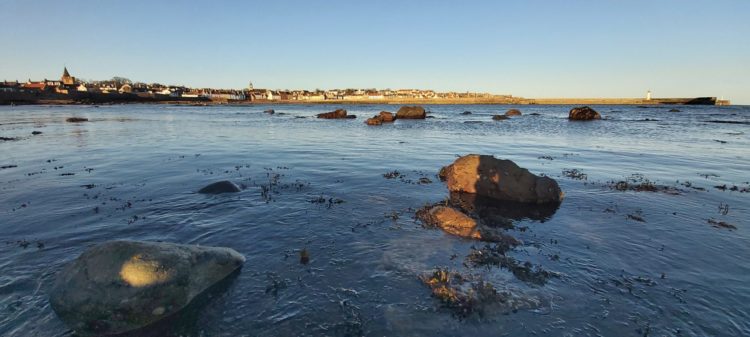New study improves marine climate change evidence base

Scientists from the University of St Andrews and Marine Scotland have undertaken the first full mapping of carbon stores across the UK’s offshore Exclusive Economic Zone (EEZ) to provide updated evidence for those trying to address aspects of climate and environmental change.
Marine sediments accumulating on the ocean floor act as traps and long-term stores of carbon. The new article, published in Frontiers in Earth Science today (4 March 2021), is the first comprehensive assessment of the entire UK EEZ carbon stock and provides a new methodological framework to map carbon in shelf sea sediments that could be applied worldwide. The research provides a UK-wide national break-down of carbon stocks in marine sediments, placing Scotland’s shelf seas very much at the forefront of these natural resources.
While representing only 8.9 per cent of the global seabed area, continental shelf sediments are estimated to hold 16 per cent of the global organic carbon stock and annually account for 86 per cent of all organic carbon buried in marine subtidal sediments. These sedimentary environments are believed to play an important role in the global carbon cycle and as such require management to ensure this climate service continues.
An Exclusive Economic Zone (EEZ) is an area of the sea in which a sovereign state has special rights regarding the exploration and use of marine resources, including energy production from water and wind. The UK EEZ includes a variety of marine sedimentary environments across a range of water depths. The UK has one of the most intensively mapped seabeds in terms of carbon storage, however, any attempt to bring data together from the fjords, estuaries and adjacent deep waters to develop the first holistic understanding of surficial carbon over the entire UK EEZ has proved difficult.
Previous carbon stock estimates within the UK EEZ have been produced for different areas, such as the Scottish and Irish Fjords. Additionally, more expansive estimates have been made for the North West European shelf which partially encompasses the UK EEZ. Many of these earlier estimates assume that the physical properties and organic content for each sediment type are uniform across the entire study area. However, it is well documented that these factors differ spatially, with coastal muds, estuaries and fjords containing significantly more organic carbon than offshore areas.
Dr Craig Smeaton, a research fellow at the University of St Andrews, said: “To overcome the issues encountered by earlier studies, nearly 275,000 data points were compiled describing the sediment type on the seabed and allowing the creation of a bespoke high-resolution map of the UK EEZ seabed. This, in conjunction with carbon data from across the UK EEZ, allowed a detailed picture of the spatial distribution of C storage across the seafloor.”
Professor William Austin, from the School of Geography and Sustainable Development at the University of St Andrews, said: “Our research highlights the significant role of carbon storage in Scotland’s marine sediments. If we can manage some of these carbon-rich ‘hot-spots’ we might reduce the release of greenhouse gases that would otherwise contribute to global warming, at the same time supporting their rich biodiversity and improving their resilience to ongoing climate change impacts.”
Dr Bill Turrell, from Marine Scotland, said: “We are very pleased to help with this important improvement to our evidence base and understanding of seabed carbon stores. Marine Scotland is promoting collaborative scientific work on carbon stores and carbon sequestration along our coasts, and in and under the sea through the Scottish Blue Carbon Forum. The Forum provides a platform both for researchers to provide scientific advice directly to policy makers, and for Government to engage directly with researchers.”
Photo caption: Fife Coastline - Anstruther by Professor Bill Austin
The paper ‘Marine Sedimentary Carbon Stocks of the United Kingdom’s Exclusive Economic Zone’ is published in Frontiers Earth Science and available online.
Please ensure that the DOI [doi.org/10.3389/feart.2021.593324] for the paper is included in all online stories and social media posts and that Frontiers in Earth Science is credited as the source.
Background
Marine Scotland is the directorate of the Scottish Government responsible for the integrated management of Scotland’s seas. The Scottish Blue Carbon Forum is a research programme developed and supported by the Scottish Government in partnership with NatureScot, the University of St Andrews, Glasgow University, Heriot-Watt University, Napier University and the Scottish Association for Marine Science (SAMS).
Issued by the University of St Andrews Communications Office.